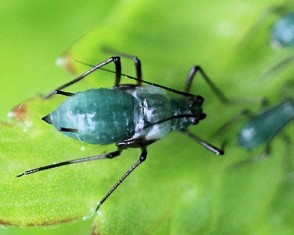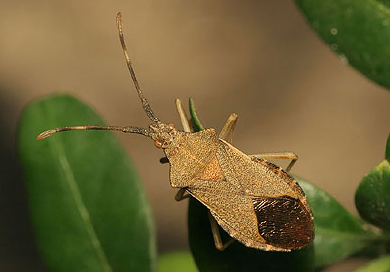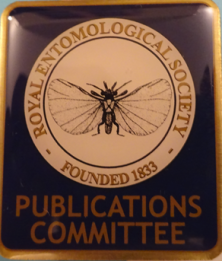I’m supposed to be writing a book, well actually two, but you have to be in the right mood to make real progress. Right now, I’m avoiding working on one of the three chapters that I haven’t even started yet* and I really should be on top of them by now as I have already spent the advance, and have less than a year to go to deliver the manuscript 😦 Instead of starting a new chapter I’m tweaking Chapter 1, which includes an overview of Insect Orders. While doing that I was side tracked by etymology. After all, the word is quite similar to my favourite subject and a lot of people confuse the two. Anyway, after some fun time with my Dictionary of Entomology, (which is much more of an encyclopaedia than a dictionary), and of course Google, I have great pleasure in presenting my one stop shop for those of you who wonder how insect orders got their names. Here they are, all in one easy to access place with a few fun-filled facts to leaven the mixture.
Wings, beautiful wings (very much not to scale)
First, a little bit of entomological jargon for those not totally au fait with it. Broadly speaking we are talking bastardised Greek and Latin. I hated Latin at school but once I really got into entomology I realised just how useful it is. I didn’t do Greek though 😊, which is a shame as Pteron is Greek for wing and this is the root of the Latin ptera, which features all over the place in entomology.
Since I am really only talking about insects and wings, I won’t mention things like the Diplura, Thysanura and other Apterygota. They don’t have wings, the clue being in the name, which is derived from Greek; A = not, pterygota, derived from the Greek ptérugos = winged, which put together gives us unwinged or wingless. In Entojargon, when we talk about wingless insects we use the term apterous, or if working with aphids, aptera (singular) or apterae (plural). I’m going to deal with winged insects, the Exopterygota and the Endopterygota. The Exopterygota are insects whose wings develop outside the body and there is a gradual change from immature to adult. Think of an aphid for example (and why not?); when the nymph (more Entojargon for immature hemimetabolus insects) reaches the third of fourth instar (Entojargon for different moulted stages), they look like they have shoulder pads; these are the wing buds, and the process of going from egg to adult in this way is called incomplete metamorphosis.
Fourth instar alatiform nymph of the Delphiniobium junackianum the Monkshood aphid. Picture from the fantastic Influential Points site https://influentialpoints.com/Images/Delphiniobium_junackianum_fourth_instar_alate_img_6833ew.jpg (Any excuse for an aphid pciture)
In the Endopterygota, those insects where the wings develop inside the body, e.g butterflies and moths, the adult bears no resemblance to the larva and the process is described as complete metamorphosis and the life cycle type as holometabolous. It is also important to note that the p in A-, Ecto- and Endopterygota is silent.
Now on to the Orders and their names. A handy tip is to remember is that aptera means no wings and ptera means with wings. This can be a bit confusing as most of the Orders all look and sound as if they have wings. This is in part, due to our appalling pronunciation of words; we tend to make the syllables fit our normal speech patterns which doesn’t necessarily mean breaking the words up in their correct component parts. Diptera and Coleoptera are two good examples – we pronounce the former as Dip-tera and informally as Dips. From a purist’s point of view, we should be pronouncing the word Di-tera – two wings, and similarly, Coleoptera as Coleo-tera, without the p 🙂 Anyway, enough of the grammar lessons and on with the insects.
Exopterygota
Ephemeroptera The Mayflies, lasting a day or winged for a day J The oldest extant group with wings. They are also a bit weird, as unlike other Exopterygota they have a winged sub-adult stage
Odonata Dragonflies and Damselflies – think dentists, toothed, derived from the Greek for tooth, odoús. Despite their amazing flight capability, the name refers to their toothed mandibles. The wings do get a mention when we get down to infraorders, the dragonflies, Anisoptera meaning uneven in that the fore and hind wings are a different shape and the damselflies, Zygoptera meaning even or yoke, both sets of wings being pretty much identical.
Dermaptera Earwigs, leathery/skin/hide, referring to the fore-wings which as well as being leathery are reduced in size. Despite this, the much larger membranous hind wings are safely folded away underneath them.
A not very well drawn (by me) earwig wing 😊
Plecoptera Stoneflies, wickerwork wings – can you see them in the main image?
Orthoptera Grasshoppers and crickets, straight wings, referring to the sclerotised forewings that cover the membranous, sometimes brightly coloured hind wings. Many people are surprised the first time they see a grasshopper flying as they have been taken in by the hopper part of the name and the common portrayal of grasshoppers in cartoons and children’s literature; or perhaps not read their bible “And the locusts went up over all the land of Egypt, and rested in all the coasts of Egypt”. I think also that many people don’t realise that locusts are grasshoppers per se.
Grasshopper wings
Dictyoptera Cockroaches, termites and allies, net wings
Notoptera The order to which the wingless Ice crawlers (Grylloblattodea) and Gladiators Mantophasmatodea) belong. Despite being wingless, Notoptera translates as back wings. It makes more sense when you realise that the name was coined when only extinct members of this order were known and they were winged.
Mantodea Mantids, the praying mantis being the one we are all familiar with, hence the name which can be translated as prophet or soothsayer
Phasmotodea Phasmids, the stick insects and leaf insects – phantom, presumably referring to their ability to blend into the background.
Psocoptera Bark lice and book lice, gnawed or biting with wings. In this case the adjective is not in reference to the appearance of the wings, but that they are winged insects that can bite and that includes humans, although in my experience, not very painful, just a little itchy. They are also able to take up water directly from the atmosphere which means that they can exploit extremely dry environments.
Embioptera Web spinners, lively wings. Did you know that Janice Edgerly-Rooks at Santa Clara University has collaborated with musicians to produce a music video of Embiopteran silk spinning? https://www.youtube.com/watch?v=veehbMKjMgw
Zoraptera Now this is the opposite of the Notoptera, the Angel insects, Zora meaning pure in the sense of not having any wings. Unfortunately for the taxonomists who named this order, winged forms have now been found 🙂
Thysanoptera Thrips and yes that is both the plural and singular, thysan meaning tassel wings, although I always think that feather would be a much more appropriate description.
Feathery thrips wing – Photo courtesy of Tom Pope @Ipm_Tom
Hemiptera True bugs – half wings. The two former official suborders were very useful descriptions, Homoptera, e.g. aphids, the same. Heteroptera such as Lygaeids, e.g. Chinch bugs, which are often misidentified by non-entomologists as beetles where the prefix Hetero means different, referring to the fact that the fore wings are hardened and often brightly coloured in comparison with the membranous hind wings.
Coreid bug – Gonecerus acuteangulatus – Photo Tristan Banstock https://www.britishbugs.org.uk/heteroptera/Coreidae/gonocerus_acuteangulatus.html
Phthiraptera The lice, the name translates as wingless louse. I guess as one of the common names for aphids is plant lice they felt the need to make the distinction in the name.
Siphonaptera Fleas – tube without wings, referring to their mouthparts
Endopterygota
Rhapidioptera Snakeflies – needle with wings, in this case referring to the ovipositor, not to the wings, which are similar to those of dragonflies.
The pointy end of a female snakefly
Megaloptera Alderflies, Dobsonflies – large wings
Neuroptera Lacewings – veined wings
Coleoptera Beetles – sheathed wings, referring to the hardened forewings, elytra, that cover the membranous hind wings. The complex process of unfolding and refolding their hind wings means that many beetles are ‘reluctant’ to fly unless they really need to.
Strepsiptera These are sometimes referred to as Stylops. They are endoparasites of other insects. The name translates as twisted wings. Like flies, they have only two pairs of functional wings the other pair being modified into halteres. Unlike flies, their halteres are modified fore wings. Their other claim to fame is that they feature on the logo of the Royal Entomological Society.
The Royal Entomological Society Strepsipteran
Mecoptera Scorpionflies, hanging flies – long wings. Again, not all Mecoptera are winged, but those that are, do indeed have long wings in relation to their body size.
Male Scorpionfly, Panorpa communis. Photo David Nicholls https://www.naturespot.org.uk/species/scorpion-fly
Siphonaptera Fleas – tube no wings. The tube part of the name refers to their mouthparts.
Diptera Flies, two wings, the hind pair are reduced to form the halteres, which are a highly complex orientation and balancing device.
Trichoptera Caddisflies, which are, evolutionarily speaking, very closely related to the Lepidoptera. Instead of scales, however, their wings are densely cover with small hairs, hence the name hairy wings. Some species can, at first glance, be mistaken for small moths. If you want to know more about caddisflies I have written about them here.
Lepidoptera Moths and butterflies, scaly wings; you all know what happens if you pick a moth or butterfly up by its wings.
Moth wing with displaced scales
Hymenoptera Wasps, bees, ants – membrane wings
Wing of a wood wasp, Sirex noctilio
And there you have it, all 30 extant insect orders in one easy location.
*
Just to remind you that I am a champion procrastinator 🙂
















